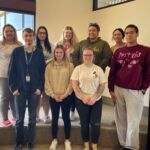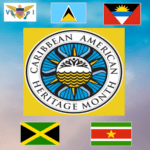One of the core tenants of digital accessibility is that all meaningful visual information (photos, artwork, videos, etc.) should have equivalent text. Most often, this comes in the form of alt tags—a hidden field that contains information about the image being displayed on the page—or in the form of a written transcript that describes both audio and visual information from a multimedia presentation or video. Alt tags and transcripts are readable by screen readers, allowing people without sight to hear the information read aloud.
According to the CDC, more than 4 million people in the US alone have an uncorrectable vision impairment, so these tools are vital for many people, but the benefits of text equivalency extend far beyond the blind community in some surprising ways. Drivers often benefit from the power of audiobooks or hands-free voice-activated calling. Children who can’t yet read can look at the pictures while an electronic narrator reads the story in a picture book. Students who are learning a second language get a more comprehensive understanding when they see a picture of an object, can read its name, and hear the word spoken aloud.
But the biggest benefit of alternate text may be searchability. Videos and images, until relatively recently, were completely unsearchable. If you wanted to share a funny line from your favorite sitcom with a friend, you would have to fast forward and rewind the video until you found the right spot. With text equivalency, you gain the ability to search for a keyword or phrase and be instantly taken to that precise moment in the video.
Google Image Search was introduced twenty years ago in 2001 after search queries for a dress worn by Jennifer Lopez overtook the Internet. Developers soon realized that not all web searches could be answered with text content and so the value of image captions and alt tags grew. Now, through the power of artificial intelligence, computers can even begin to understand what might be in a photograph. People, trees, and other common objects are recognizable to AI after averaging millions of images and their associated text. The alternative text that we write manually now helps to inform tomorrow’s technology.
Learn more about how to write good alternative text for searchability and accessibility with the following resources:
Accessible Images in Microsoft Word

Kimberly Norris
Digital Marketing Director
D.H.S. Section 508 Trusted Tester





